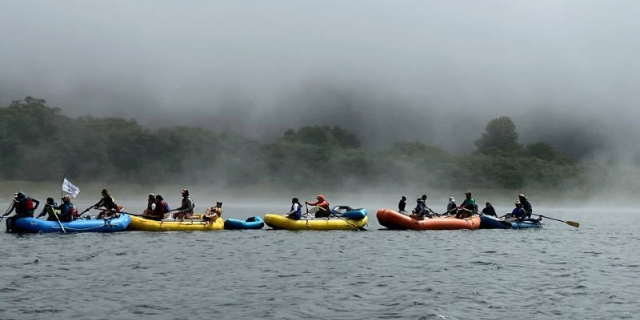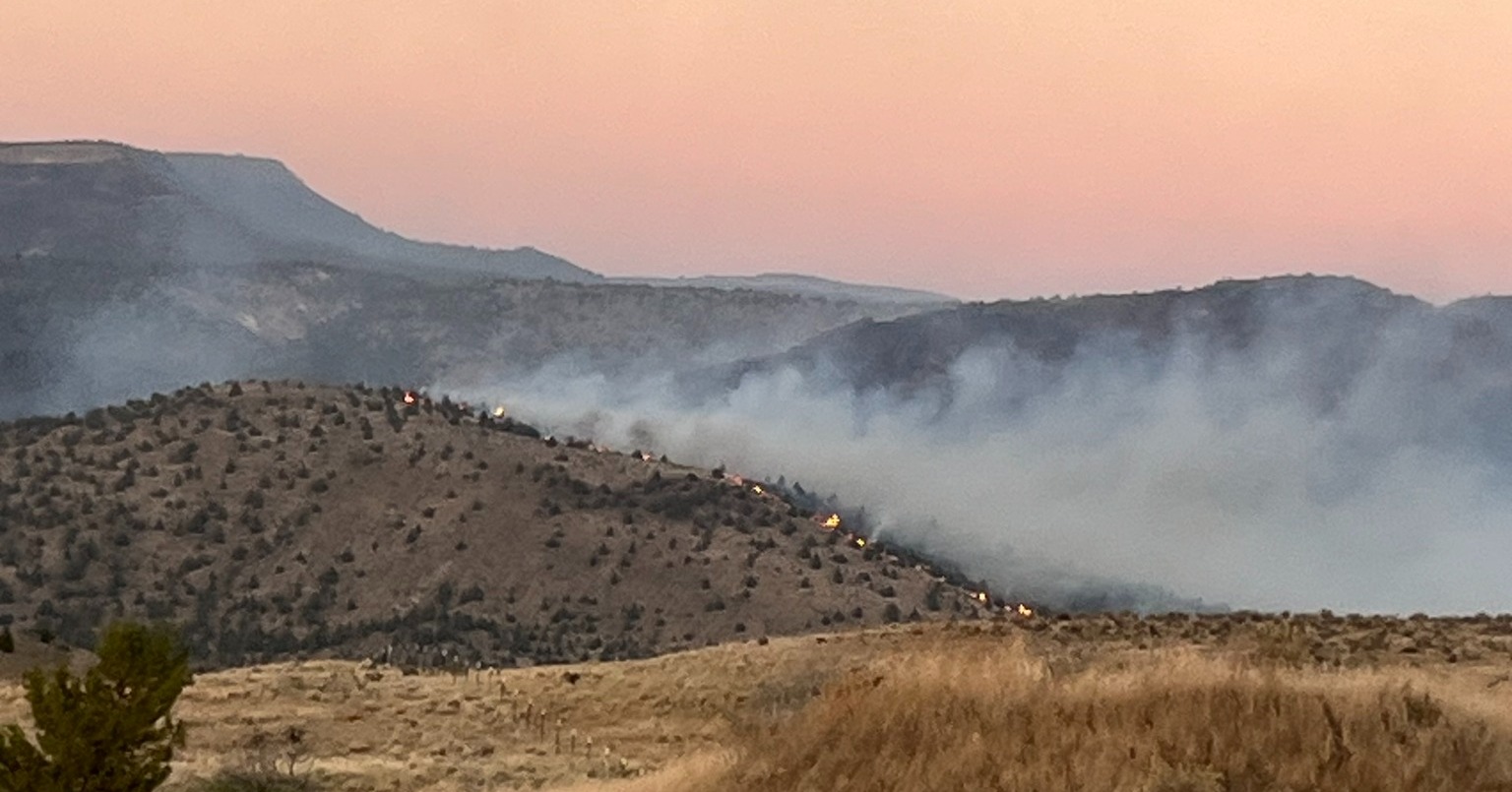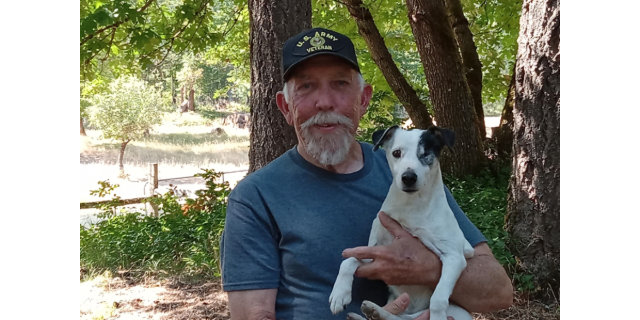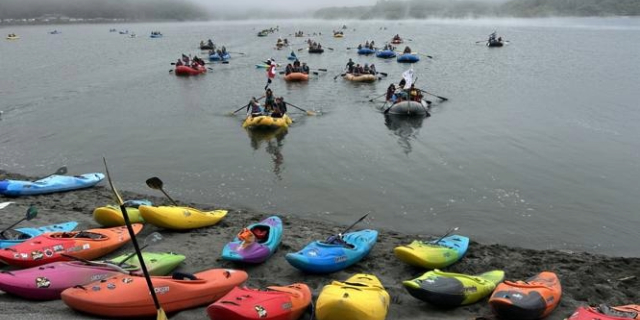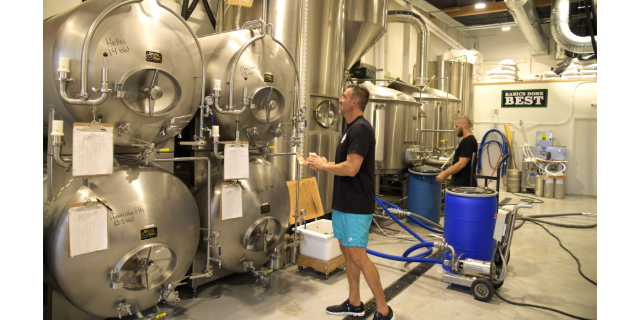REQUA, Calif. — Feelings of relief, pride. Of glad that it’s over, of experiences that will never be forgotten.
Among those relieved was Keeya Wiki, 17, of Ashland, whose mother, Geneva, is a Yurok, and father, Reweti, is a Maori.
Trending
“I’m overflowing with gratitude and appreciation … 30 days is no joke,” she said. And, although admittedly tired, Keeya emphasized, “Reclaiming our waterways is more important than a sore shoulder.”
Keeya, who will be a senior at Ashland High School this fall, was among the 18 youth who completed the month-long, 310-mile long “Source to Sea” paddle from the headwaters of the Wood River, a tributary of the Klamath River, down through Agency Lake, the Link River, and Lake Ewauna to the Klamath River and Requa, where the river reaches in the Pacific Ocean.
The journey, which began June 12 and ended last Friday afternoon, was billed the First Descent of the un-dammed Klamath River, an undertaking three years in the making. Keeya and others trained in whitewater kayaking, some in Chile along with Pacific Northwest rivers, to prepare for the epic journey. Like others, Keeya had no prior kayaking experience.
“I had no experience with recreation on a river before. I had never rafted, never paddled,” she said, quickly adding that she hopes to continue because, “I love kayaking.”
“She’s part of the first generation to enjoy a relationship with her ancestral river,” said her obviously proud mother. “It was amazing seeing the culmination of three years of hard work to see someone in our family complete the journey with joy.”
Among Keeya’s cherished memories – and “there are so many” – was seeing bald eagles and great blue herons while paddling. She especially relishes a great blue that “led us down the rapids. We ran the rapids and it would be sitting right there watching us.”
Trending
Overflowing with memories was kayaker, Malia McNair, 15, a Klamath-Modoc.
“We did it!” Malia happily yelped. “I never thought it was possible.”
She learned to kayak at a training camp and school in Chile and later on several Northwest rivers, including the McKenzie, Smith and Salmon. Malia admitted that at times “I thought of giving up,” but decided she wanted to “show Native American youth are just as tough” as others.
“We made lifelong friends with people from the headwaters to the ocean,” Malia added, referring to the main group of Indigenous paddlers being joined by others during sections of the river – about 150 family, friends and others from Chile, Bolivia, New Zealand, China and areas around the U.S. – for the final day. “We were all native kids so we could get along and support each other.”
Because of her experience, Malia hopes to launch a paddling school “so I can help other kids.”
“They’re going to be the leaders of tomorrow because they’re going to fight for our rivers,” said her mother, Lillian Yasana, as her husband Carlos McNair nodded in agreement. “Twenty years ago we wouldn’t have heard our youth speak their native languages.”
Ruby Williams, 18, a Karuk from Quartz Valley, said the training and lessons learned along the Source to Sea paddle have motivated her to want to go to college and become an advocate for tribal matters, including seeking the removal and preventing the construction of new dams. This fall, Ruby plans to attend Fort Lewis College in Durango, Colorado, and major in environmental science.
“It’s a whole lot easier to advocate for your people,” she said of lessons learned from kayaking the Klamath River.
Like others, Ruby was initially hesitant about the idea of paddling the Klamath.
“Coming into this I didn’t really want to come,” she recalled, quickly adding, “I’ve grown to love kayaking. The kids were awesome. We’re like a family.”
Offering another perspective was Jeff Mitchell, a former chairman of the Klamath Tribes, who has been a longtime advocate for the removal of Klamath River dams.
“It brought me a new perspective,” he said, explaining, “I spent most of my life trying to get rid of those dams. None of them (the young paddlers) were born when we started this fight. Their lives are going to be a lot different than my life.”
Among the challenges was a proposal in the 1980s for the construction of the Salt Caves Dam, a proposed hydroelectric dam about 25 miles southwest of Klamath Falls. The proposal was eventually dropped because of opposition from tribes, state agencies from Oregon and California, and the U.S. Department of the Interior because of concerns it would harm fish habitat and recreational values.
Mitchell also is pleased because the Source to Sea expedition has involved several tribes, including the Klamath, Yurok, Karuk, and Hoopa tribes.
“It was great to see the communities get together,” Mitchell said, noting the dam removals and river journey has received national and international attention.
The weekend celebration, which began Friday when the young kayakers, accompanied by about 180 friends, family and others who followed in kayaks and paddle rafts, ended Sunday after two days of celebrations and symposium.
Email freelance writer Lee Juillerat at 337lee337@charter.net. This story first appeared at Ashland.news.


